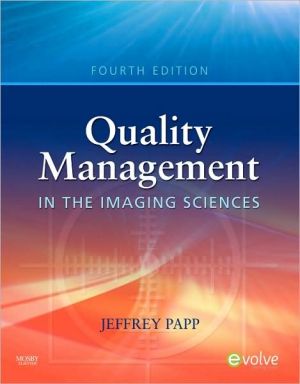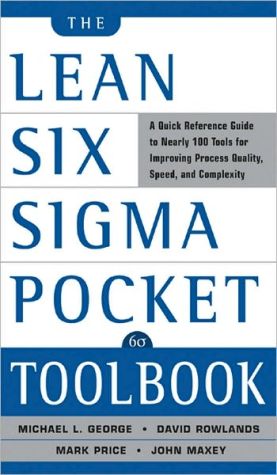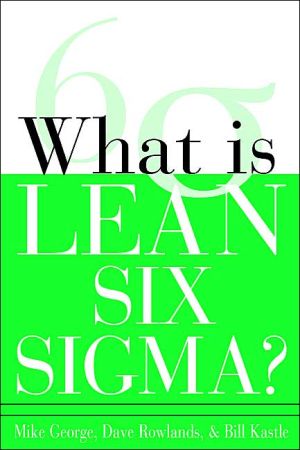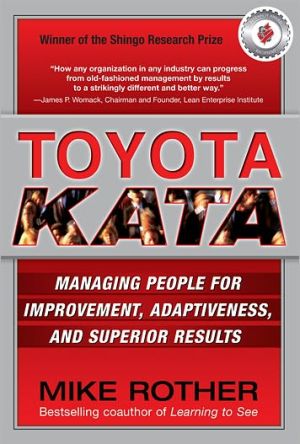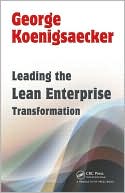Quality Management in the Imaging Sciences
With this single resource, you can access quality management and quality control information for all major imaging modalities! Updated with the latest changes in technology and federal regulations, Quality Management in the Imaging Sciences provides a thorough description of Quality Management and explains why it is so important to imaging technology. Step-by-step QM procedures include full-size evaluation forms, with instructions on how to evaluate equipment and document results. This book...
Search in google:
Completely updated, this text provides a basic description of quality management and explains why it is so important to imaging technology. Step-by-step procedures with full-size evaluation forms explain how to understand and implement proper evaluation and documentation of quality assurance and quality control. Useful features include appendices with a review of radiographic quality factors and a glossary with definitions of all the bold-faced terms from the text. A companion CD includes mock Registry exams, sample documentation forms, lab experiments, and critical thinking questions.• Cross-platform CD includes more than 300 practice exam questions for the ARRT advanced certification examination in quality management, 25 full-sized sample documentation forms, 27 student experiments, and questions for analysis and critical thinking in each chapter. • Student experiments on CD allow instructors to modify experiments to their own needs, and let students complete answers on the computer and print out. • Special icon indicates current federal standards, highlighting the most up-to-date quality management information available. • All imaging sciences are covered, devoting quality management chapters on to fluoroscopy, CT, MRI, sonography, and mammography. • Step-by-step quality management procedures with full-sized sample evaluation forms offer detailed instructions on how to evaluate equipment and document results for CT, MRI, ultrasound, and nuclear medicine. • Student-friendly features include learning objectives, chapter outlines, key terms (with definitions in glossary), student experiments on CD-ROM, and review questions at the end of each chapter (answers are located at the end of the text).• Updated coverage of computed and direct radiography, direct radiography artifacts, and HIPAA, providing the most current information available — all in one place. • Coverage of practical applications of quality management tools and procedures. • Updated information on darkroom disease and on image processing, now that film is used less often. • Coverage of sensitometric testing and daylight systems. • Updated chapters on equipment quality control to reflect most current FDA, ACR, and AAPM procedure. • Updated mock exams to reflect the latest ARRT exam content specifications. Susan Lura Sanson This is a comprehensive resource that will enhance anyradiologic technology course in quality assurance/quality control. Inaddition, it will serve as an excellent reference tool for anyradiology department or technologist implementing a quality managementprogram. A technologist preparing for the quality management advancedlevel examination will find this book covers it all. The purpose isto provide the most current and comprehensive information available onthe quality management aspects of darkrooms, processing, equipment andaccessories, fluoroscopic and advanced imaging equipment, artifacts,repeat analysis, and silver recovery. Quality assurance organizationsand their websites are listed in the appendix. Various forms needed fordocumentation of quality improvement activities can be found throughoutthe book with additional forms in the appendix. This book istailor-made for a radiologic technology course in quality management. Student radiographers will appreciate having a copy of this book intheir personal library. Every department or quality controltechnologist would enjoy having such a practical reference to consult. It would be worthwhile as a review text for all imaging professionalsconsidering the advance registry examination in qualitymanagement. Special features include federal regulations in bold-facetype with a unique symbol. Each chapter includes an outline,educational objectives, key terms, experiments, and review questions. There is a mock quality management registry examination in Chapter 16. Chapters on quality control in advanced imaging equipment (CT, MRI, US,and NM) are also included. Don't hesitate to order this book. Everyradiologic science educator from clinicalinstructor to programdirector should have an understanding of quality improvement withintheir profession. It will bring everyone up to speed, very quickly. Students will have access to all aspects of quality improvement in onetextbook. Radiology departments will appreciate this comprehensivereference. A library within a university or college that houses aradiography program would benefit from the addition of this book to theradiology reference section. This is an excellent book that I lookforward to using in my quality assurance/quality controlcourse.
Ch. 1Introduction to quality management1Ch. 2Quality management tools and procedures16Ch. 3Film darkrooms32Ch. 4Film processing44Ch. 5Processor quality control60Ch. 6Silver recovery75Ch. 7Quality control of radiographic equipment84Ch. 8Radiographic ancillary equipment106Ch. 9Quality control of fluoroscopic equipment126Ch. 10Advanced imaging equipment145Ch. 11Outcomes assessment of radiographic images176Ch. 12Mammographic quality standards195Ch. 13Quality control in computed tomography230Ch. 14Quality control for magnetic resonance imaging equipment242Ch. 15Ultrasound equipment quality assurance253Ch. 16Quality assurance in nuclear medicine269App. AReview of radiographic quality293App. BAgencies, organizations, and committees in quality assurance301
\ Susan Lura SansonThis is a comprehensive resource that will enhance anyradiologic technology course in quality assurance/quality control. Inaddition, it will serve as an excellent reference tool for anyradiology department or technologist implementing a quality managementprogram. A technologist preparing for the quality management advancedlevel examination will find this book covers it all. The purpose isto provide the most current and comprehensive information available onthe quality management aspects of darkrooms, processing, equipment andaccessories, fluoroscopic and advanced imaging equipment, artifacts,repeat analysis, and silver recovery. Quality assurance organizationsand their websites are listed in the appendix. Various forms needed fordocumentation of quality improvement activities can be found throughoutthe book with additional forms in the appendix. This book istailor-made for a radiologic technology course in quality management. Student radiographers will appreciate having a copy of this book intheir personal library. Every department or quality controltechnologist would enjoy having such a practical reference to consult. It would be worthwhile as a review text for all imaging professionalsconsidering the advance registry examination in qualitymanagement. Special features include federal regulations in bold-facetype with a unique symbol. Each chapter includes an outline,educational objectives, key terms, experiments, and review questions. There is a mock quality management registry examination in Chapter 16. Chapters on quality control in advanced imaging equipment (CT, MRI, US,and NM) are also included. Don't hesitate to order this book. Everyradiologic science educator from clinicalinstructor to programdirector should have an understanding of quality improvement withintheir profession. It will bring everyone up to speed, very quickly. Students will have access to all aspects of quality improvement in onetextbook. Radiology departments will appreciate this comprehensivereference. A library within a university or college that houses aradiography program would benefit from the addition of this book to theradiology reference section. This is an excellent book that I lookforward to using in my quality assurance/quality controlcourse.\ \ \ \ \ From The CriticsReviewer: Susan Lura Sanson, MEd, RT(R)(QM)(Concordia University of Wisconsin)\ Description: This is a comprehensive resource that will enhance any radiologic technology course in quality assurance/quality control. In addition, it will serve as an excellent reference tool for any radiology department or technologist implementing a quality management program. A technologist preparing for the quality management advanced level examination will find this book covers it all.\ Purpose: The purpose is to provide the most current and comprehensive information available on the quality management aspects of darkrooms, processing, equipment and accessories, fluoroscopic and advanced imaging equipment, artifacts, repeat analysis, and silver recovery. Quality assurance organizations and their websites are listed in the appendix. Various forms needed for documentation of quality improvement activities can be found throughout the book with additional forms in the appendix.\ Audience: This book is tailor-made for a radiologic technology course in quality management. Student radiographers will appreciate having a copy of this book in their personal library. Every department or quality control technologist would enjoy having such a practical reference to consult. It would be worthwhile as a review text for all imaging professionals considering the advance registry examination in quality management.\ Features: Special features include federal regulations in bold-face type with a unique symbol. Each chapter includes an outline, educational objectives, key terms, experiments, and review questions. There is a mock quality management registry examination in Chapter 16. Chapters on quality control in advanced imaging equipment (CT, MRI, US, and NM) are also included.\ Assessment: Don't hesitate to order this book. Every radiologic science educator from clinical instructor to program director should have an understanding of quality improvement within their profession. It will bring everyone up to speed, very quickly. Students will have access to all aspects of quality improvement in one textbook. Radiology departments will appreciate this comprehensive reference. A library within a university or college that houses a radiography program would benefit from the addition of this book to the radiology reference section. This is an excellent book that I look forward to using in my quality assurance/quality control course.\ \ \ 5 Stars! from Doody\ \
